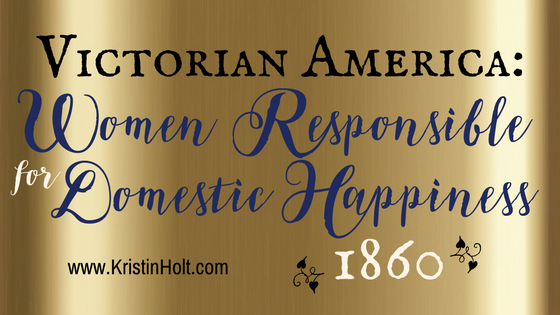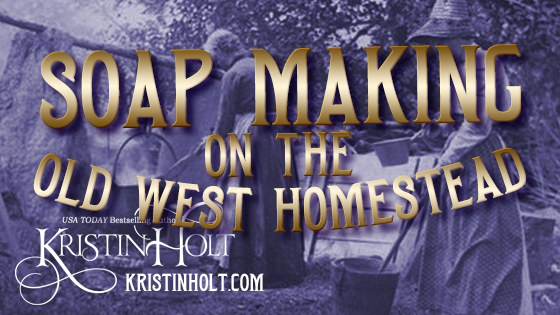
by Kristin Holt | Aug 23, 2017 | Articles
Victorian-era expectations regarding women’s province (the home), placed responsibility for happiness, economy (and perceived respectability), and her husband’s “comfort” at home, wholly within her reach–and the consequences (good and bad) entirely on her shoulders. This vintage newspaper article, “Truths for Wives”, is a classical example of pervasive attitudes in the nineteenth century. While starkly dissimilar to today’s societal expectations, this short article from 1860 sheds much light on Victorian expectations–including winning and keeping a husband’s love.

by Kristin Holt | Sep 17, 2015 | Articles
Despite knowing this book was probably only about the Victorian Era in England, and hence households in Great Britain, I was hopeful I’d learn plenty in this nonfiction volume about households of the era outside of GB. I’m satisfied that I did, without the author touching on it.
While America wasn’t mentioned, more specifically, my specialty of the Western United States, the fact remains that the Old West (and the U.S. at large) did have a Victorian Era. England’s Victorian attitudes, practices, expectations, and culture most certainly did impact and strongly influence the United States. It’s evident that many things would be the same in all western cultures, e.g. housekeepers dyed curtains and repainted furniture as needed– upkeep that is most out-dated presently.
I read this book specifically for my own ongoing research and understanding of history. It explains a great deal in four chapters: 1) Middle-class Victorian Homes, 2) Mistress of the Household, 3) Recruiting and Replacing the Servants, and 4) Life Below Stairs.
5 STARS.

by Kristin Holt | Jun 22, 2015 | Articles
Twenty-first century people have it easy. In fact, most of us don’t know how to make soap–much less the ingredients (found on the Old West homestead) that should be saved in the process of living so that soap could be made. Soap did become readily available through catalog orders, but it cost money, and the more remove a settler, or the earlier a man or family found themselves on a frontier, the dirty, hot job of soap making was a necessary one. This article sheds light on the process, basic ingredients, methodology, as well as the rise of commercially prepared soap products.











